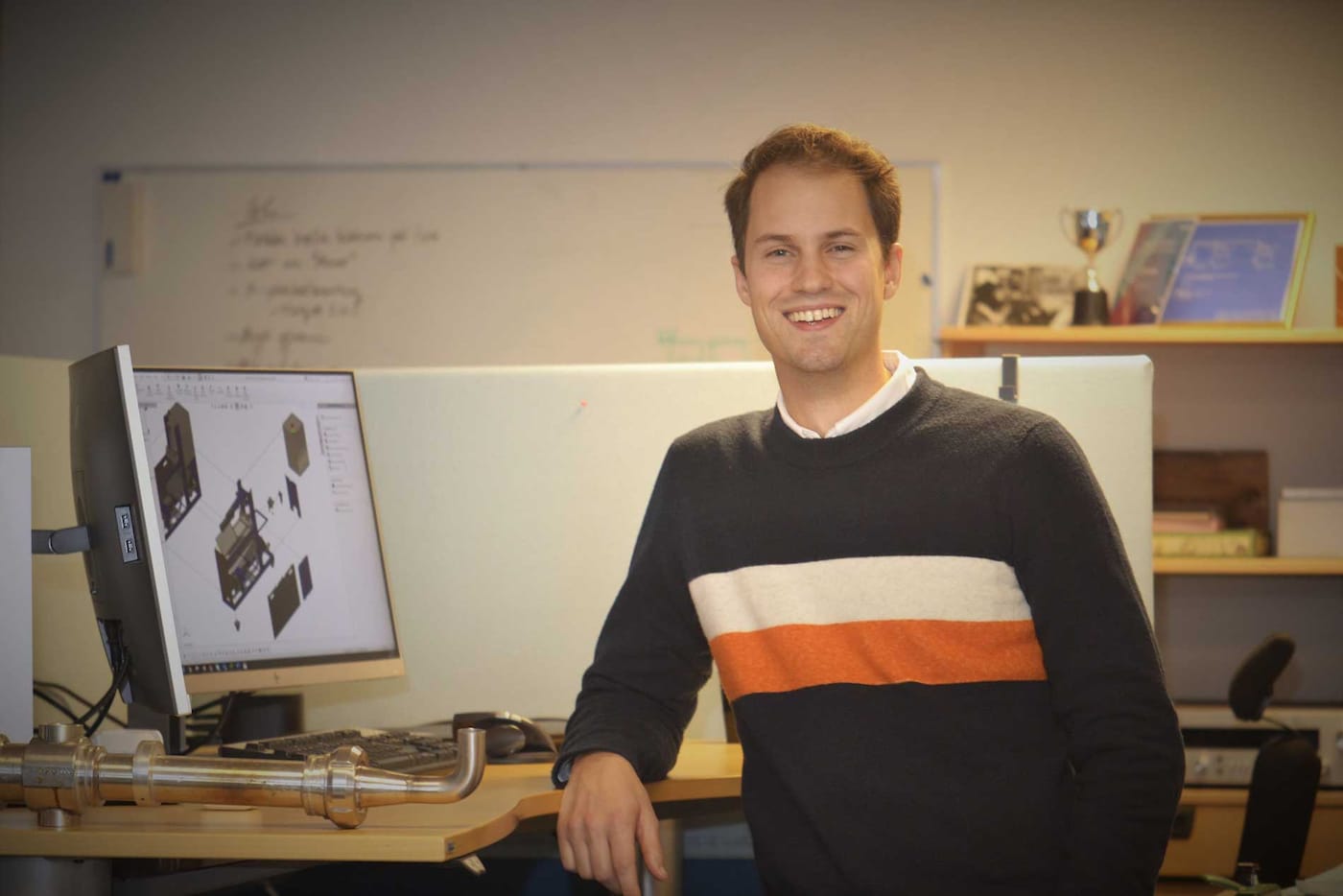When your colleagues can’t travel to assist on a project in person, you have to find other ways to make it work. Anton Vendelstrand, Automation and Design Engineer, helped develop a new augmented reality (AR) solution to help us through pandemic challenges. And it may just represent the future of our business.

Travel ban paves way for new technology
When the travel ban was issued in the middle of our factory move from Singapore to Vietnam, the experienced team based in Singapore couldn’t oversee and support the first batches of production in the brand-new factory in Vietnam. There was a risk that the project would be delayed until borders re-opened.
Anton says: “Together with my colleague Sara Khosravi, we procured a pair of augmented reality (AR) glasses. The R&D team in Singapore could then see what colleagues in Vietnam were seeing in real time. For the staff in Vietnam, it was a hands-free solution to get the needed support.”
Now we use AR throughout the integrated supply chain to overcome other COVID-19 related challenges.

“We all struggled with travel restrictions last year due to COVID-19,” says Anton Vendelstrand, Automation and Design Engineer based at our site in Stockholm, Sweden. “Instead of just waiting, we came up with innovative ways of supporting each other in order to stay productive. In my case, I helped develop a new augmented reality (AR) solution that could influence the future of our business.”

How does augmented reality work?
The definition of augmented reality (AR) is an interactive experience of a real-world environment. That means that objects in the real world are enhanced by an overlay of digital information, a combination of real and virtual worlds. It’s distinguishable from virtual reality (VR), which is a completely simulated experience that doesn’t involve interaction with the real world.
Anton’s augmented reality solution helped us on location in a factory. But there are many other uses for AR. Another great example is a popular consumer tool we developed for interior decorating. The Dulux Visualizer app uses augmented reality to help you see exactly what your walls will look like painted a different color. All you need is a smartphone!

Culture of innovation
“This experience is a great example of AkzoNobel’s deeply rooted culture of innovation,” says Anton. “I submitted an idea that quickly turned into a global project with a dedicated team. The solution is completely new for the company, and seven months later we’re ready to launch and scale up.”
He adds: “When it comes to my day-to-day work for the company, even though my department is small and niche, what we do really adds value to our customers. In addition to the adhesives, we also offer state-of-the-art machinery and software systems that optimize production. None of our competitors offer this – that might be why we’re industry leaders!
“The economist Theodore Levitt said: ‘Creativity is thinking up new things. Innovation is doing new things.’ Here at AkzoNobel, you’re encouraged to do both.”




